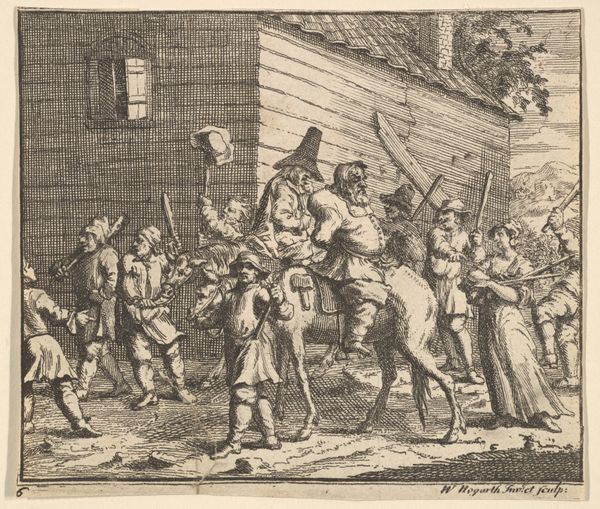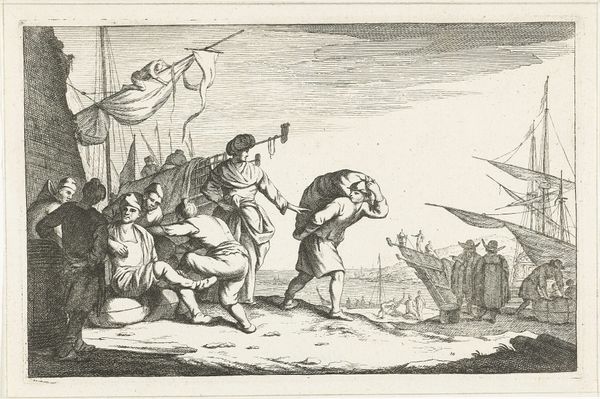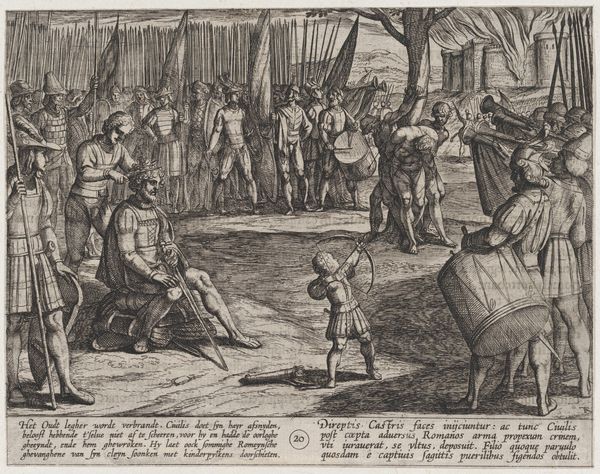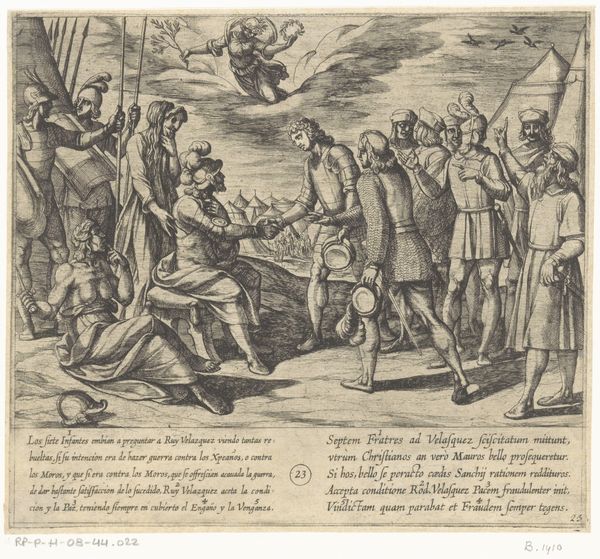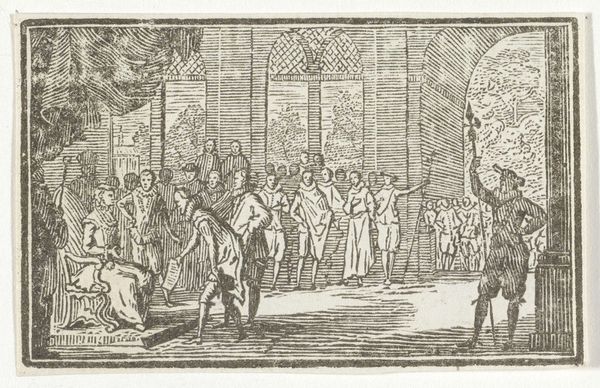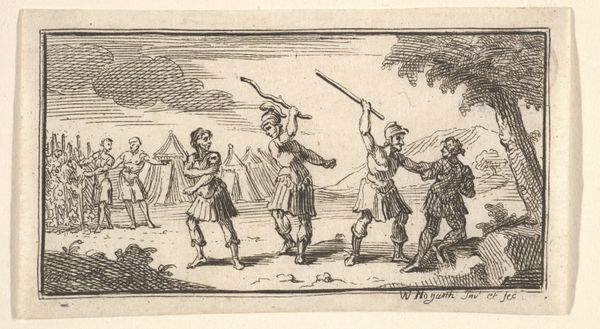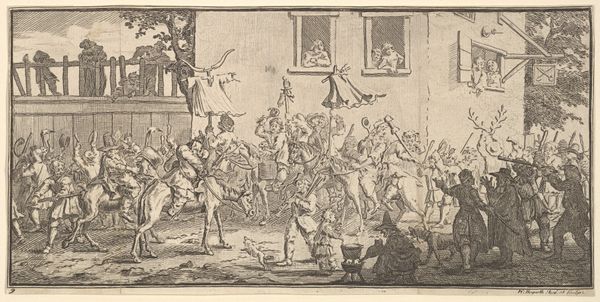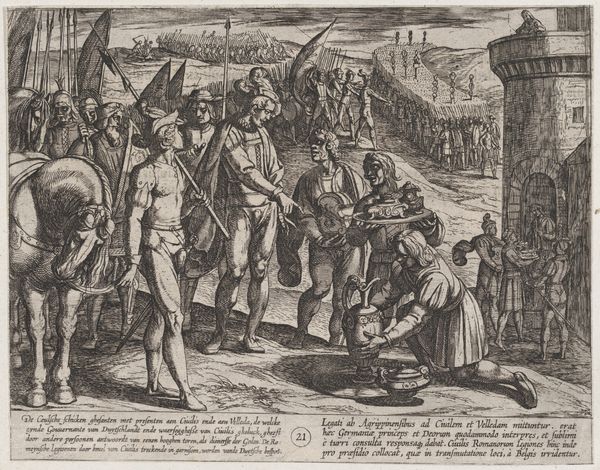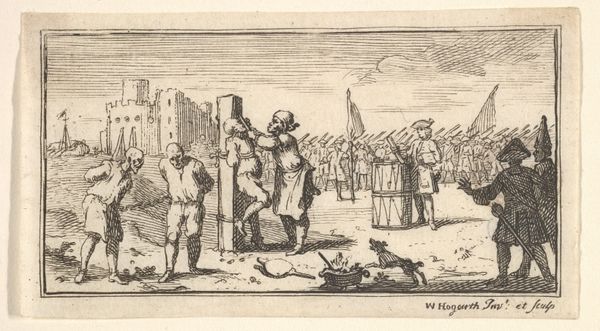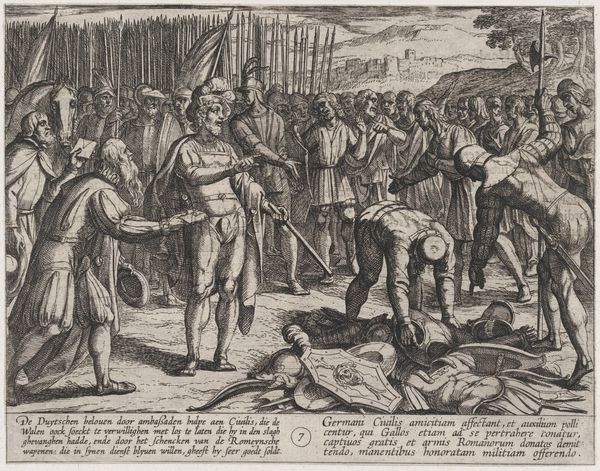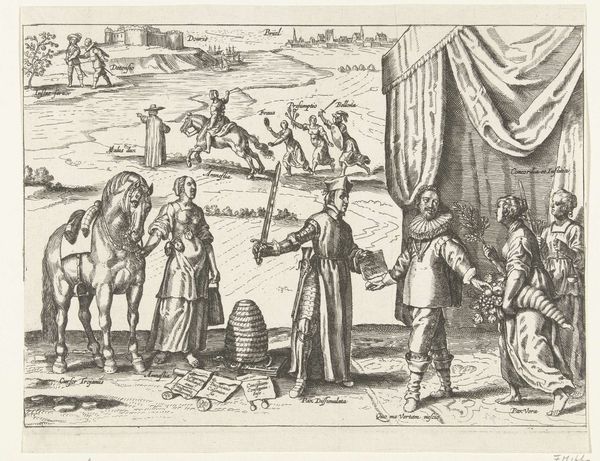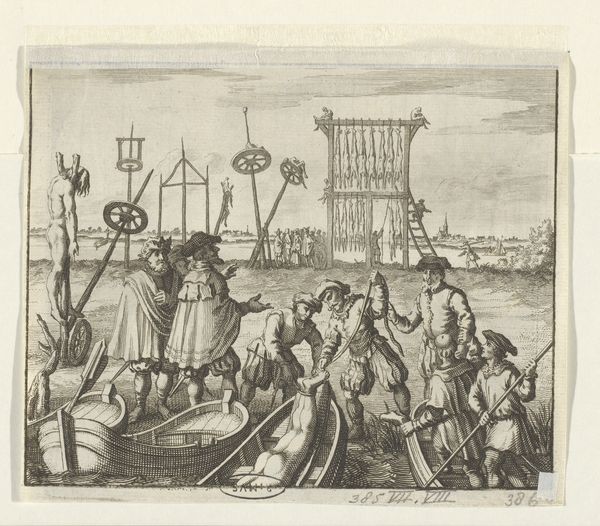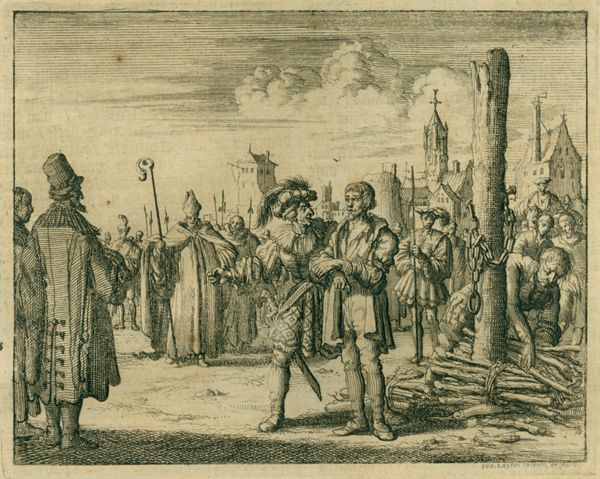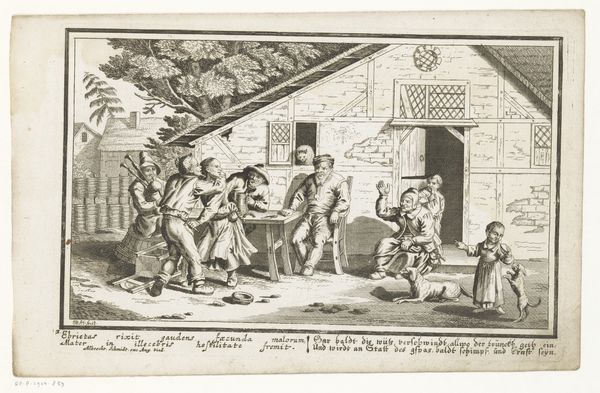
Shameful Discharge (John Beaver, Roman Military Punishments, 1725) 1725 - 1779
0:00
0:00
drawing, print, engraving
#
drawing
#
narrative-art
# print
#
figuration
#
line
#
history-painting
#
academic-art
#
engraving
Dimensions: sheet: 1 3/4 x 3 1/16 in. (4.4 x 7.7 cm)
Copyright: Public Domain
Editor: Here we have "Shameful Discharge," a print by William Hogarth, sometime between 1725 and 1779. It depicts a Roman military punishment in detailed line work. I'm struck by the downcast figure of the soldier and wonder about the story behind this… what can you tell me about the significance of the imagery? Curator: Hogarth was fascinated by the human drama inherent in historical narratives, and how visual symbols could encapsulate entire cultural attitudes. Consider the Roman eagle standards – what do they signify? Editor: I suppose they represent Roman power and military might. Curator: Exactly. The eagle was a potent symbol. Now, look at how Hogarth positions the disgraced soldier in relation to those standards, and the commanding officer. What emotions does that evoke? Editor: Definitely shame. The soldier is isolated, with his head bowed, while the officer on the platform is pointing, making an example of him. All of his gear is lying on the ground. It really emphasizes the dishonor. Curator: Precisely. And consider the lasting impact of symbols of power and disgrace. This scene is specific, but how do similar images resonate even today? Think about medals of honor, public shaming, or even modern military ceremonies. Editor: So Hogarth uses the Roman imagery to talk about timeless themes of honor and dishonor, and how those are visually represented and culturally remembered. It really is a powerful way to connect with the past! Curator: Yes, he understands the cultural weight symbols carry and how they connect us to historical archetypes. The symbols communicate a story that resonates beyond the literal scene.
Comments
No comments
Be the first to comment and join the conversation on the ultimate creative platform.
